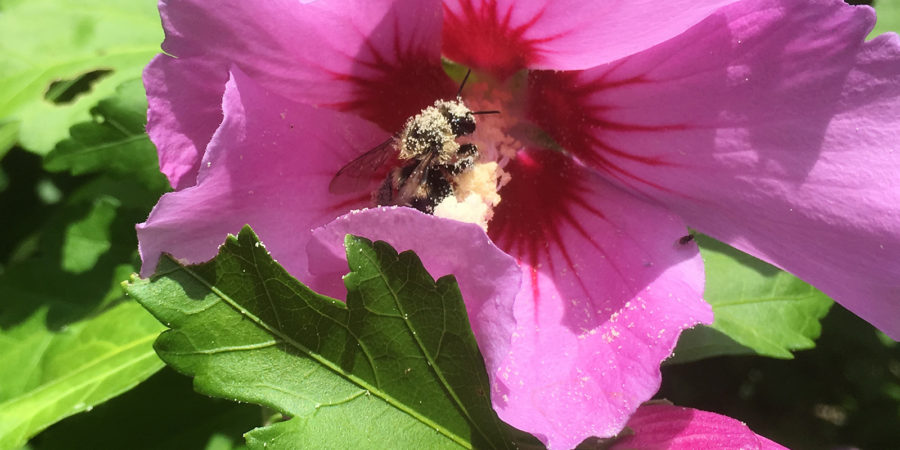It’s the end of the summer and fall is not far away. Yet, our garden is as busy as ever with a wide variety of insects, arachnids and other welcome guests. Pollinators are in abundance, going from flower to flower, trying to get as much pollen as they can hold or cover themselves with. Our Snapping Turtles hatched a short time ago making a nighttime escape into the woods. Monarch caterpillars munch on the milkweed in preparation of their morphing into beautiful butterflies. The garden is a place of continuous wonder and activity.
The pollinators, mainly bees and butterflies, buzz and flitter constantly around the garden. Bumble Bees love rolling around in the Rose of Sharon and Ragusa Rose flowers covering themselves in pollen to take back to their hives. Other bees, such as the Hoverbee and small Sweetbee, regularly visit the Shasta Daisies and Black-eyed Susans. But Honeybees are not regular visitors to our garden. We see just a handful throughout the summer, I’m sorry to report.
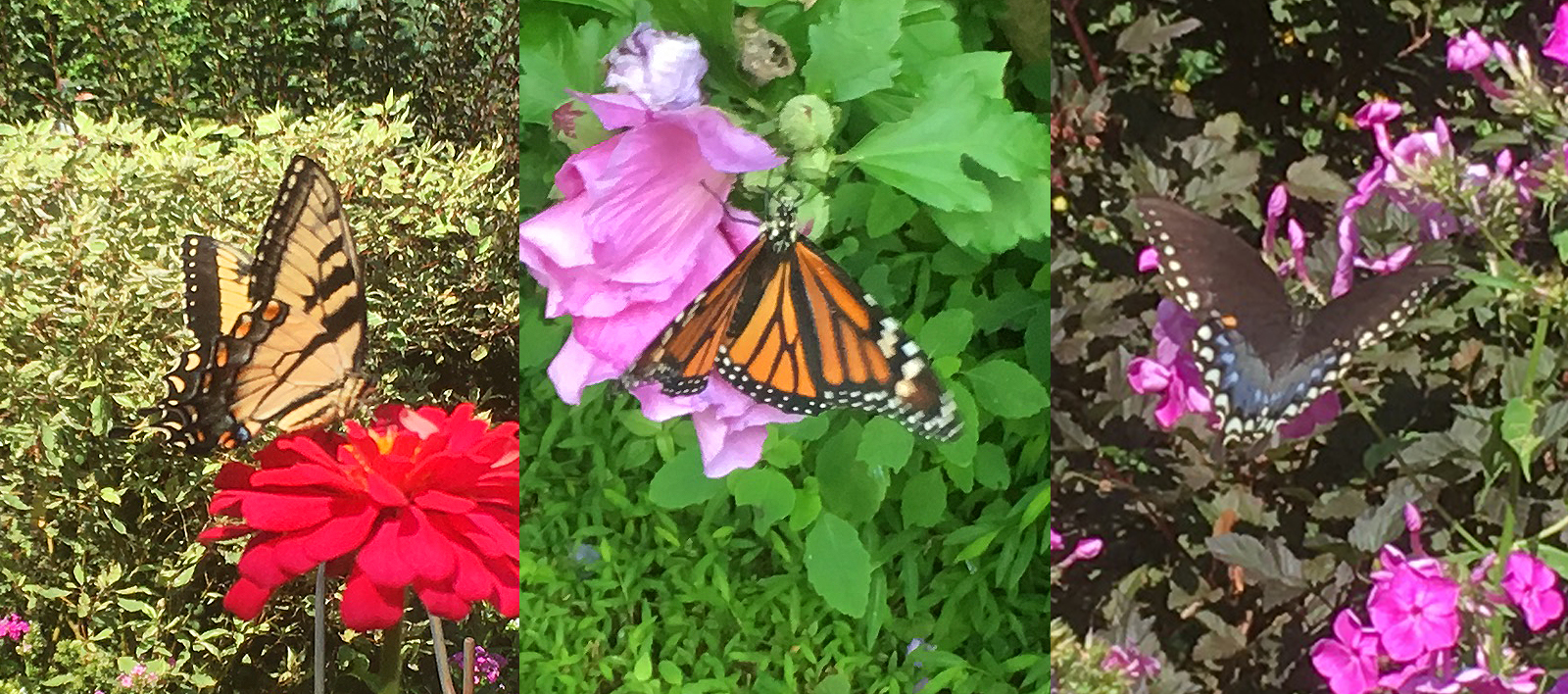
Insects must be wary, however, of the many predators lurking amongst the flowers. Garden Spiders are large arachnids that build nearly invisible, strong, circular webs. The spiders sit motionless, directly in the center, waiting for a flying meal. Assassin Bugs are ambush predators usually spotted on the Shasta Daisy and Black-eyed Susan flower heads. They wait, motionless as well, at the sides or below the petals. When a bee, fly or butterfly lands, they pounce injecting a toxin through a long mouthpart into their victim. Looking carefully at these flowers you can see the various insects that have fallen to these predators.
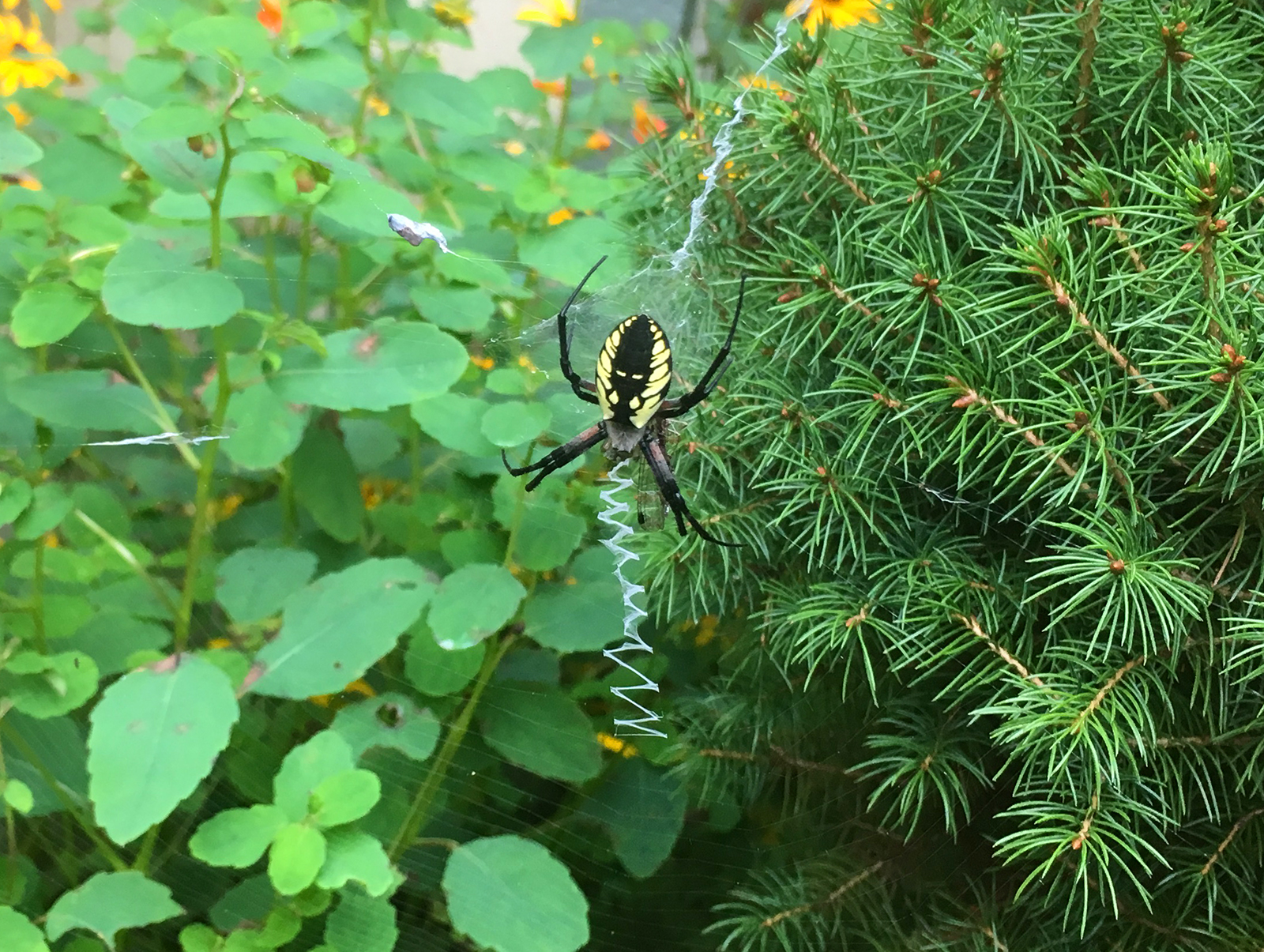
FACT: Assassin Bugs vary in size and coloration and are extremely beneficial in any garden. The ones in our garden are camouflaged very nicely in green and yellow but other varieties are brightly colored.
Two of the three Snapping Turtle nests have hatched from our patio area. We only saw two of the last hatchlings making their way out of the holes. They made their escape during the night to evade predators and humans alike. There remains one last nest that should hatch at any time. These three nests are the most we’ve seen in any one summer over the past twenty years — word must be getting around the wetlands!
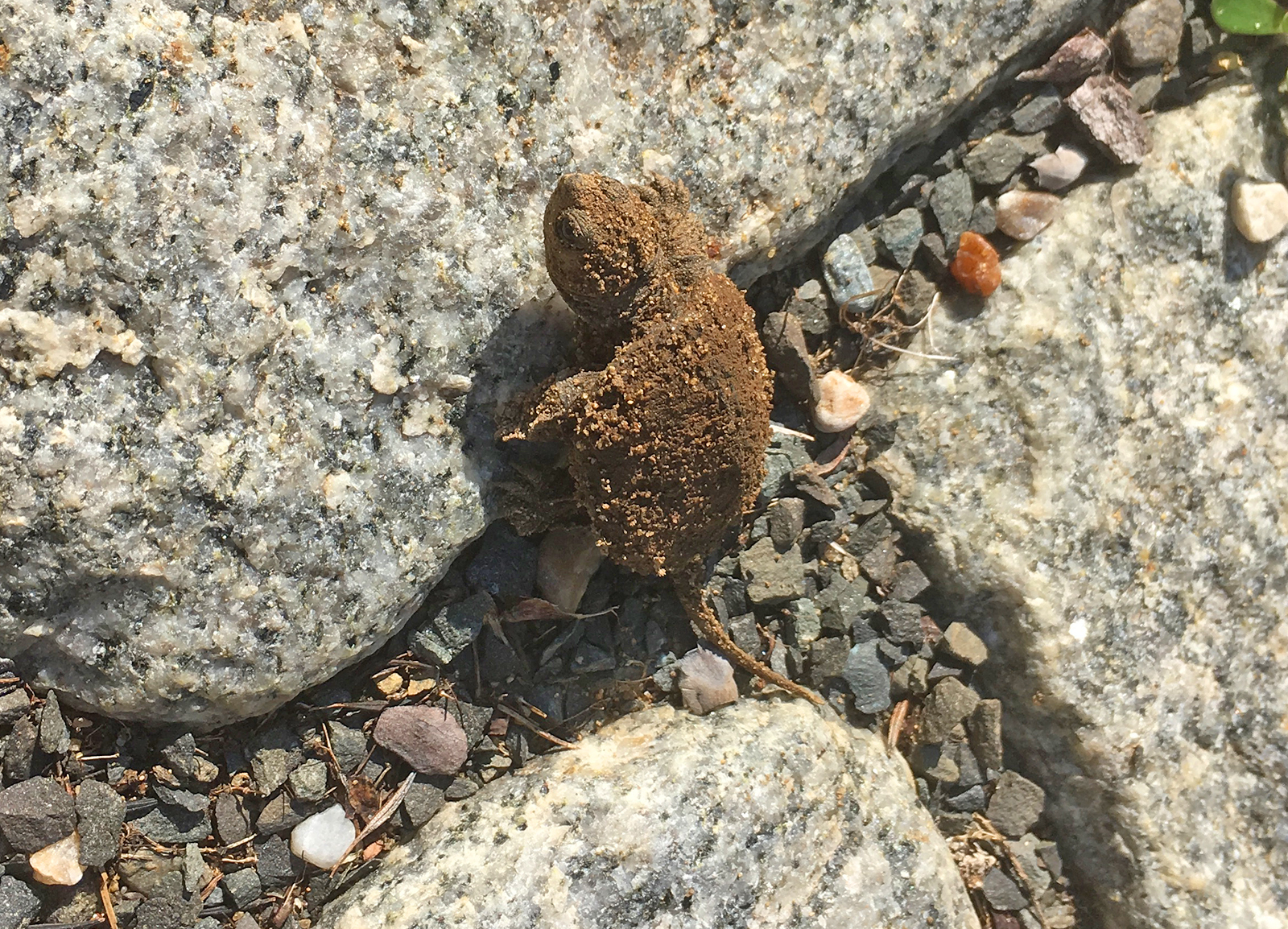
Although our Swamp Milkweeds have not had nearly as many blooms as last year, we’ve still seen several Monarch caterpillars munching away at the leaves. We’ve had three or four caterpillars this summer, and one has chosen a nearby Burning Bush to form it’s chrysalis. I’ll be keeping and eye on it until it turns dark and is ready to reveal the Monarch Butterfly within.
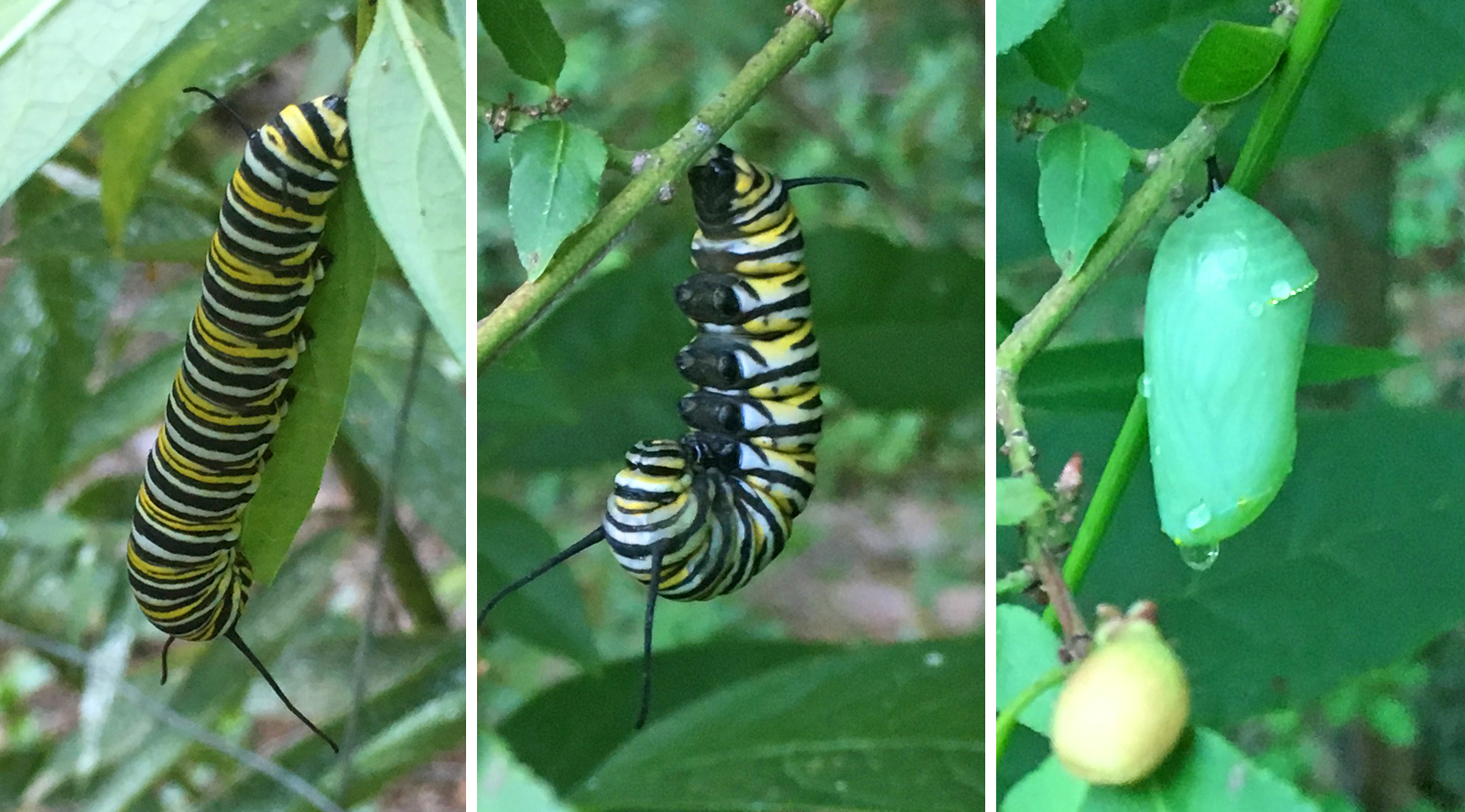
The fall flowering plants and shrubs are coming alive now. Woodland and other fall blooming Asters and wild flowers such as Goldenrod. Before long the flowers will be turning to seed, and birds of all kinds will be flying in to get their fill. There’s always color and activity in our gardens to enjoy all year long. Keep watching.
OBSERVATION: Bumble Bees can’t get enough of the pollen in Rose of Sharon and Ragusa Rose flowers. They roll around buzzing like crazy in these flower heads.
